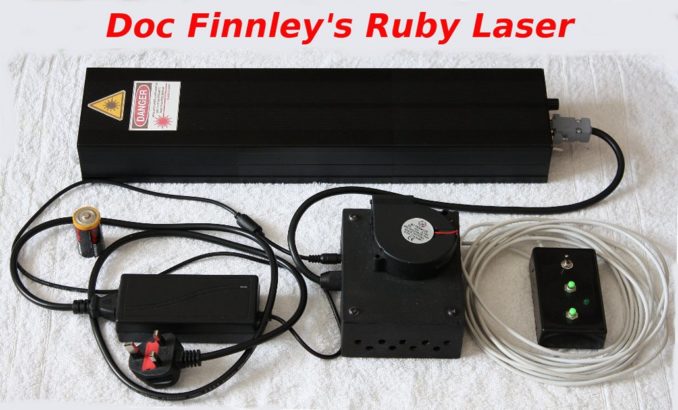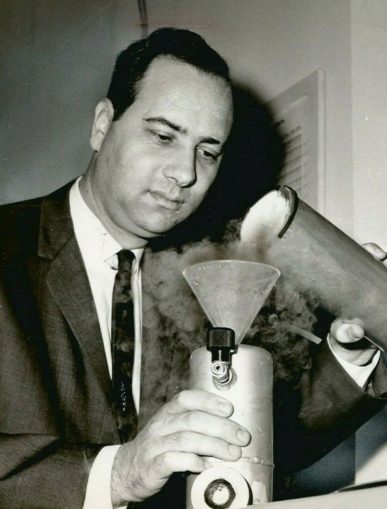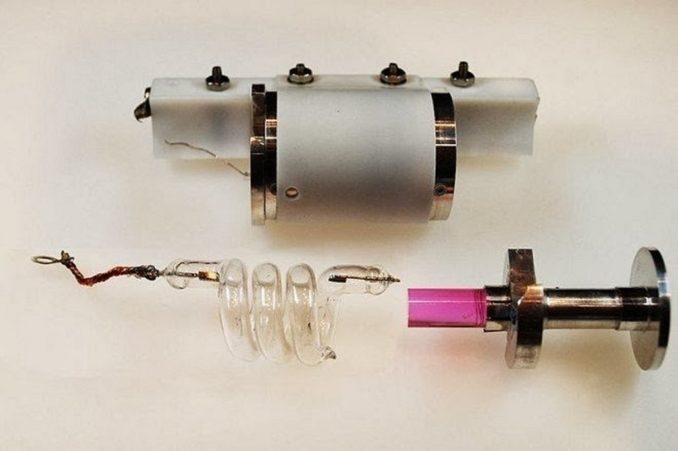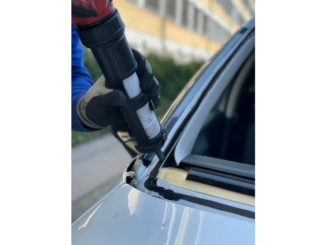Introduction
For many years the Doc has had the desire to attempt the construction of a ruby laser.
After six months of hard work, disappointment, late nights, lots of booze and a drained bank account I proudly present to the Going Postal community:

© Dr Mike Finnley, Going Postal 2018
Motivation
I hated school. In particular PE. The teacher was an amiable and intelligent man but his chosen subject offered me nothing but anguish. Throwing and kicking rubber balls at each other whilst screaming with delight for two hours were not what I would call conducive to the development of the mind.
So off to the local library where I read books on mathematics, physics, chemistry, computers and even spirituality. Not that I understood a tenth of the subject matters. It felt right and comforting to just read them.
One book introduced me to a Theodore Maiman and his creation of the world’s first working laser. The ruby laser.

Unknown (Associated Press) / Public domain
History
The laser can be thought of as a combination of an electronic oscillator and an amplifier. To put it more plainly: The laser exists for the same reason that your computer and mobile-phone get smaller. Frequency vs energy. The higher the frequency the more energy required.
In late 1953 Charles Hard Townes had invented a device that made electrons oscillate and amplify at a very high frequency. It is called the MASER. Microwave Amplification by Stimulated Emission of Radiation.
Townes later disliked the term ‘Microwave’ and preferred the word ‘Molecular’ as he understood that it was possible for his device to operate beyond the microwave radio spectrum and possibly into the visible.
In 1958 Townes and Arthur L Schawlow (Townes’ brother-in-law) published a paper on the theory of an ‘Optical Maser’. The term ‘LASER’ was coined by Gordon Gould. An interesting chap who at one time flirted with the ideas of Marxism.
He and Townes fought through the courts over the acronym up until 1977 when Gould finally won, earning him many millions of dollars in royalties.
All for the changing of one word: Microwave to Light!

Guy Immega / CC0
Synthetic ruby (more on that in part 2) was a natural choice for a laser. It had already proven itself capable of working at microwave frequencies and it was well understood that it had the potential to operate towards the red end of the visible spectrum. The problem was the amount of energy to get it to ‘lase’.
Irwin Wieder tried pumping energy into a ruby crystal, using a high power tungsten lamp, but he couldn’t get nearly enough energy into the atoms to make the ruby lase.
In early 1960 at Hugues Laboratories Theodore Maiman was also working on the ruby laser problem.
His two genius insights were:
1) We don’t need to ‘pump’ the ruby continuously. So long as you supply enough energy you can generate very short duration (pulsed) laser light. (‘pump’ meaning ‘to supply energy’)
2) A photographic xenon flash lamp is ideal. It’s able to supply high energy and operates in the blue/green end of the optical spectrum which are the peak absorption bands for ruby.
Scouring a photographic supplier’s catalog he found the largest flash tube that they manufactured. In the above photo, of the original components, you can see it as the glass (quartz) helical tube.
On May the 16th 1960 Maiman and his assistant, Irnee d’Haenens, fired the flash lamp and the world’s first LASER was born.
* * *
I can’t leave this brief history without mentioning Ali Javan, a former student of Townes who was working at Bell Laboratories at the same time that Maiman was at Hugues.
Whilst Maiman was working on his ‘pulsed’ laser, Javan was developing a ‘continuations wave’ gas laser. His idea was to mix helium and neon in a long, narrow bore, glass tube. Using a high voltage to excite the helium that would then stimulate the neon into laser action. Alas, it didn’t work…..for the moment.
By May of 1960 Maiman had won the race to make the first working laser but Javan didn’t give up. In the December of 1960 Javan’s He-Ne laser produced a continuous beam of infrared light. A world’s first.
The He-Ne laser became one of the most mass produced and popular low power laser of the late 20th century. Having a wide range of operating modes from the infrared thru to the green end of the spectrum. It was/is used in labs, schools, industrial alignment, in the 1970s both Philips and Pioneer were using them in CD and video laser disc players and by the 1980s laser printers. Not forgetting bar-code scanners.
Maiman may have won the race but Javan took it to the bank.
General thoughts and Links
Over the next few articles I’ll concentrate on the ruby laser components, home-made mirror mounts, mirror alignment tools and mirror alignment itself.
That may sound dull and probably it is to a lot of you. Like any hobby the fun is in the detail and making your own laser is no different.
On a serious note home-made lasers tend to use high voltages. For example: my laser stores a top voltage of around 740v (it’s only a small laser!) at an energy of 438J.
In layman’s terms: A dead short (0.2 ohms assumed) across the capacitor bank would release nearly 1.4MW of power! (yes, 1.4 MILLION WATTS)
Safety is absolutely essential.
You are playing with things that will kill you. No second chances.
* * *
On a lighter note here are some interesting links:-
Sam’s laser FAQ has got to be the first stop for any amateur laser constructor. Detailed site with lots of information. Great fun and Sam is always open to the odd email.
Diane’s site is fascinating. A very clever person.
Don’t be put off by the name of the site or the fact they’re Russian. The translation is good and the projects are genius. Even if you don’t like lasers check out his gas jet engine at the end of the page. Gotta build one!
© Dr Mike Finnley 2018
Audio file



